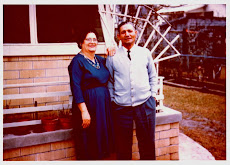

After eating everything I could in Split, I took the hour-long ferry ride to the island of Hvar, the Soljans’ ancestral home.
Hvar looks like a post-card: clear azure blue seas and hilly terrain with red-tile roofed villas. Vineyards, olive groves, and lavender fields grow everywhere as does rosemary, sage, thyme, and bay trees.
In the main city, Hvar Town, a medieval fortress still stands guard against a Turkish invasion. It may have kept the Turks out, but not the Italian upper crust which have made Hvar their own posh playground.
My evening agenda in Hvar Town was to hang out at a café, sip pivo (beer) – Karlovacko and Osjecko are the local favorites - and eyeball the yachts in the harbor. After a leisurely dinner, I strolled the square with a cone of gelato listening to the techno music spill out from the happening night spots around the harbor.
Ahead of me a pair of very thin, very tan blondes stumbled from boats to clubs, scruffing their Louboutins on the polished cobblestones, in search of a party. A dog, rock in mouth, came up to me, tail wagging hopefully, in search of a game of fetch. All of them found what they were looking for.
Daylight was for visiting other parts of the island. There are only two main highways, both very twisty, with hair pin curves and very few guard rails. The bus ride to Stari Grad, my grandpa’s hometown, was a white knuckle excursion made even more so by the driver’s choice of music, a repetitive beat I can only describe as Croatian Cajun.
Stari Grad (literally Old Town) with its peaceful bay, art galleries and bohemian atmosphere, evokes Bay St. Louis where I lived before the storm.
First stop was St. Stephen’s church to give thanks for deliverance from that crazy bus ride, followed by a stroll through the cemetery to meet the family. Soljans and Kovacevics are as common here as Favres and Ladners are on the Mississippi Coast. It was the quietest family reunion I’ve ever attended.
Except for cars, some modern stores and locals sporting iPods and cell phones, Stari Grad probably hasn’t changed much in 80 years. Elderly nonas in black dresses, aprons and head scarves gossiped in the squares. Church bells tolled the hour. Dogs napped in the shade. I caught a whiff of something familiar and lemony. I followed the scent trail to a giant Southern magnolia – at least 50 years old– covered with waxy white flowers. Not a common sight in Hvar. I thought of all the people from Stari Grad who went to Biloxi -- and I wondered if a little bit of Biloxi may have made its way back here.
A wing in the local museum is named after the artist Juraj Plancic who was married to Grandpa’s sister. His style reminds me of our favorite local son, Walter Anderson. I leafed through a book in their collection and found a photo of Aunt Tonica. She looked just like my mother.
The food on Hvar is homey and traditional– spaghetti, grilled meat, polenta, seafood stews. For dessert, thin pancakes filled with melon and Nutella (love me some Nutella), and apple or fig strudel. Gelato stands and pizzerias abound.
At family-run konobas I didn't bother looking at menus – everything is market driven. The servers told me what to order, then post-dinner brought around the house grappa. A word of warning if you go: After a few shots, suddenly you'll be able to speak Croatian – or something that sounds like it. Don't make any plans for the next morning. You won’t be up to them.
Other highlights of the trip: a tour of an abandoned village where time stands still after 50 years. Climbing to the highest point of Hvar. Watching school children in local costume folk dancing in the square. Drinking tea made from sage gathered by the road. And learning to pronounce Do vidjanja -- good-bye.
Not that I liked having to say it.


No comments:
Post a Comment